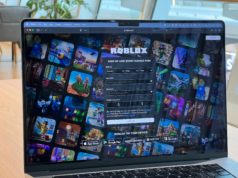Guest column by Ned Sherman, Co-Founder and CEO of Digital Media Wire, co-owner/producer of Digital Entertainment World (an IDG World Expo joint venture), and Managing Director of DMW Hexagon, a consulting/advisory practice providing research, business development and corporate strategy for digital media companies.
Ask most people what’s going on in “digital entertainment” and you’re sure to hear plenty of excitement about great films, TV series, music and gaming on popular digital platforms like Netflix, Amazon, Spotify and YouTube. No doubt, the digital highway is abuzz with on-demand content at our fingertips.
But talk to media industry insiders and you’re likely to hear concern about things like “cord cutting” and “cannibalization” of traditional revenue sources. To understand what’s really going on in the business of digital entertainment, it is important to understand how content gets into the global digital supply chain to feed hungry digital consumers.
The answer lies in the complex and often misunderstood network of tech/media businesses that comprise the Digital Entertainment Ecosystem. At its two ends are the heart and soul of the business: content and consumers. In the pre-digital world, the relationship between them was largely dictated by a carefully constructed system of gatekeepers. Everyone relied on a rights licensing regime that sliced and diced content to be doled out on terms, and at set timing and pricing.
Today, traditional retail, theatrical and cable providers of content are facing unprecedented challenges triggered by this developing and complex system, in which new market entrants can become digital power-players and the old guard turned into road kill. No longer based on scarcity and time limitations, this system has been replaced by an era of “anytime anywhere, any device,” with an abundance of content available through a multitude of distribution channels.
Digital Entertainment World, the market and conference returning in February 2015 after debuting earlier this year, constructed a road map to illustrate examples of tech/media partnerships helping creators and traditional media companies prosper in the digital age (see chart).

The outer edge, alongside consumers, consists of the connected devices that serve as the new gateway to content. Peel back the next layer and you’ll see everything from Comcast and Time Warner Cable to Netflix, Hulu and social networks like Facebook and Instagram.
Then it gets really interesting with the “Enablers.” These companies are far from being household names and most are unknown to the average consumer. They fall into 22 distinct categories from Content Protection and Payments to Rights, Data & Analytics.
It is a stark look at how hundreds of businesses are working hand-in-hand with content creators and media companies behind the scenes to power and, in many ways, make the digital entertainment revolution possible. Some examples:
3Pillar Global
Everybody knows the lovable kids’ characters, cutting-edge news and scripted shows on PBS. In a typical month, Americans watch more than 300 million videos across PBS’ web, mobile and connected device platforms, with 77% of those streams being delivered on mobile platforms. Few, however, are aware that 3Pillar Global, a technology company based in Fairfax, VA, has an internal product development team working with PBS to build product solutions to distribute the award-winning content everywhere viewers want to consume it – from Android and Kindle Fire to Apple TV and Chromecast.
Limelight Networks
Nintendo is a household name offering game classics from Mario Bros. to Princess Zelda. As ambassadors of many Nintendo games, Mario and Luigi welcome visitors to the Nintendo Europe websites. Yet prior to working with Limelight Networks the sites often loaded slowly with awkward video integration. Nintendo remedied the problem by partnering with Limelight and creating a seamless end-to-end video content management tool. It integrates with the existing content management system, ensuring the correct video format for the requesting device and browser, whether PC or mobile.
Verizon Digital Media Services
Verizon Communications serves as one of America’s largest broadband and telecommunications companies with a wireless network that ranks among the top-two largest in the U.S. What remains less clear is that the company’s Verizon Digital Media Services division, based in Santa Monica, provides a suite of advanced video solutions and products to Hollywood studios, cable and broadcast networks, as well as online video publishers. Among other things, it powers cloud based TV Everywhere services for some of the world’s largest broadcasters and their affiliates, including ABC and Disney, to provide secure, PCI-compliant networks for ecommerce providers.
The need for more cooperation and meaningful partnerships like these between media and technology companies has never been greater. The global market for digital content has reached the tipping point, with revenue growth accelerating at a faster pace than ever before thanks to new paid advertising and premium monetization models that are driving engagement like never before.
Over the next three years, more than $700 billion of growth is expected in the global entertainment and media market (according to PwC), and all signs are pointing to a digital future filled with opportunity for content and technology companies alike. So when people ask how you succeed in the digital age, tell them, “It takes an ecosystem.”







